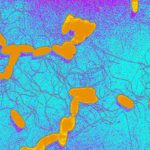Link to Pubmed [PMID] – 28730149
Link to DOI – 16210.3389/fpubh.2017.00162
Front Public Health 2017 ; 5(): 162
Antimicrobial resistance (AMR) is a major threat to human, animal health, and environment worldwide. For human, transmission occurred through a variety of routes both in health-care settings and community. In animals, AMR was reported in livestock, pets, and wildlife; transmission of AMR can be zoonotic with the probably most important route being foodborne transmission. The Indian Ocean Commission (IOC), composed of Comoros, Madagascar, Mauritius, Reunion (France), and Seychelles recognized the surveillance of AMR in both animal and human as a main public health priority for the region. Mayotte, French overseas territory, located in Comoros archipelago, was also included in this review. This review summarized our best epidemiological knowledge regarding AMR in Indian Ocean. We documented the prevalence, and phenotypic and genotypic profiles of prone to resistance Gram-positive and Gram-negative bacteria both in animals and humans. Our review clearly pointed out extended-spectrum β-lactamase and carbapenemase-producing Enterobacteriaceae as main human and animal health issue in IOC. However, publications on AMR are scarce, particularly in Comoros, Mayotte, and Seychelles. Thus, research and surveillance priorities were recommended (i) estimating the volume of antimicrobial drugs used in livestock and human medicine in the different territories [mainly third generation cephalosporin (3GC)]; (ii) developing a “One Health” surveillance approach with epidemiological indicators as zoonotic foodborne pathogen (i.e., couple Escherichia coli resistance to 3GC/carbapenems); (iii) screening travelers with a history of hospitalization and consumption of antibiotic drug returning from at risk areas (e.g., mcr-1 transmission with China or hajj pilgrims) allowing an early warning detection of the emergence for quick control measures implementation in IOC.

